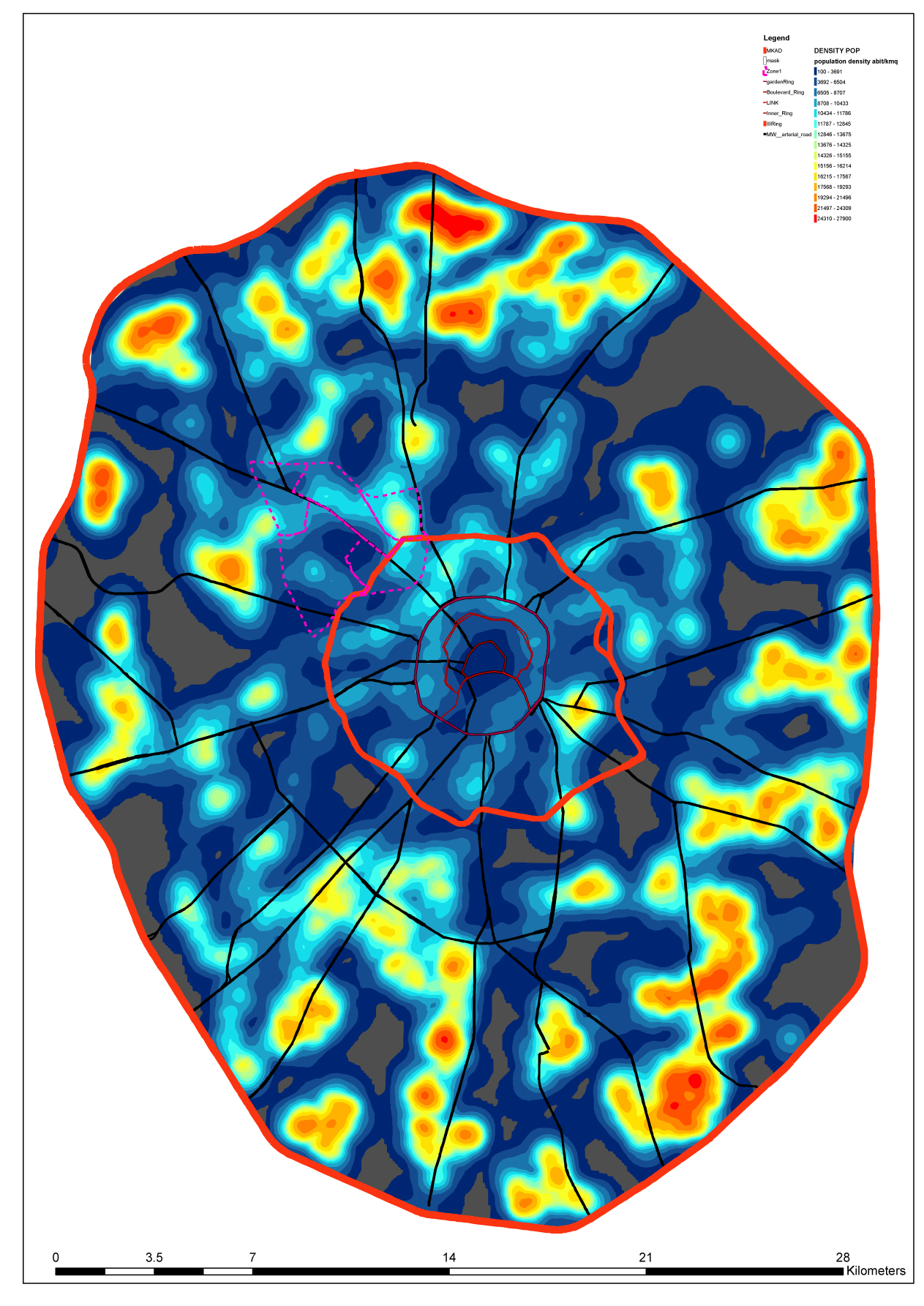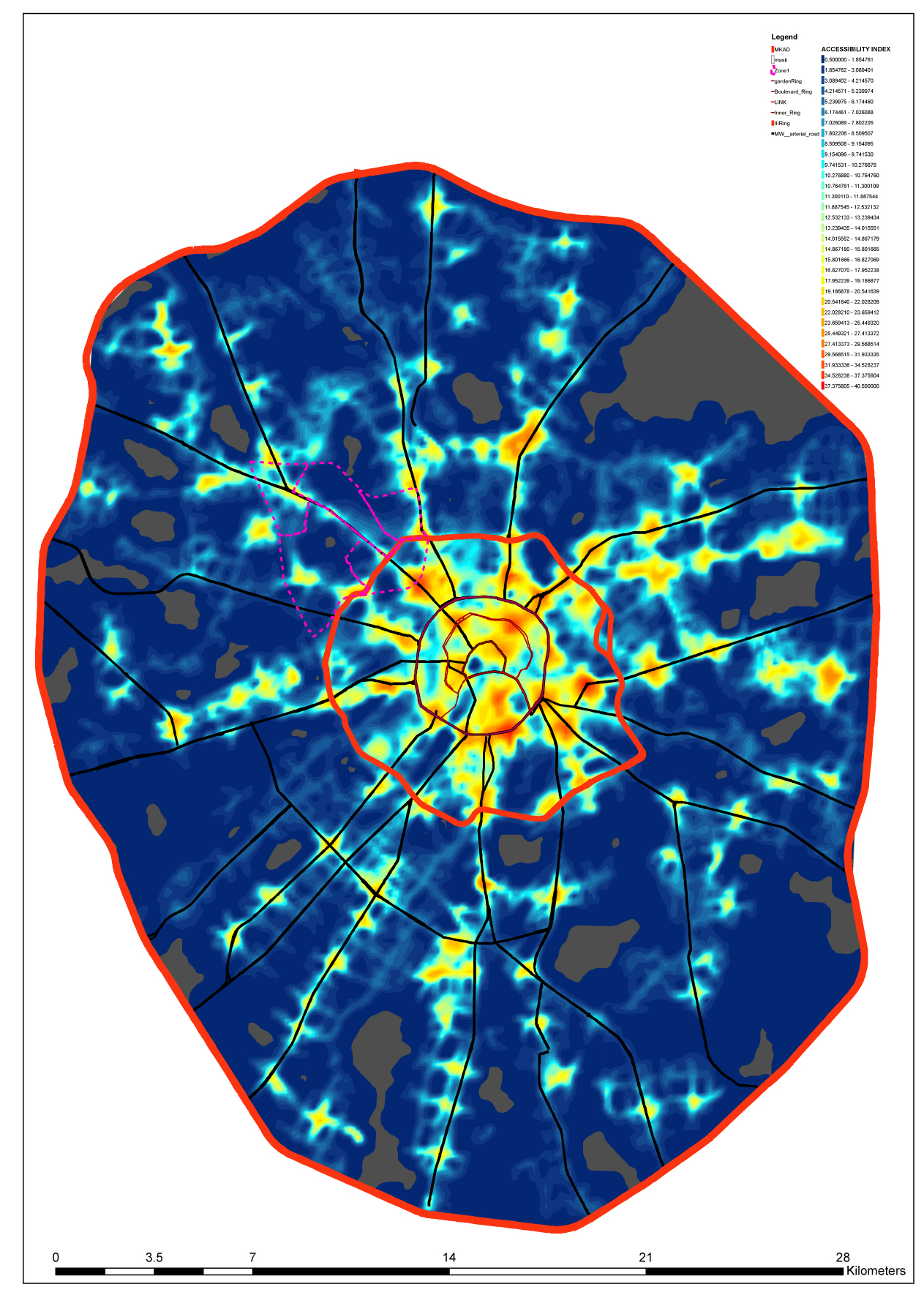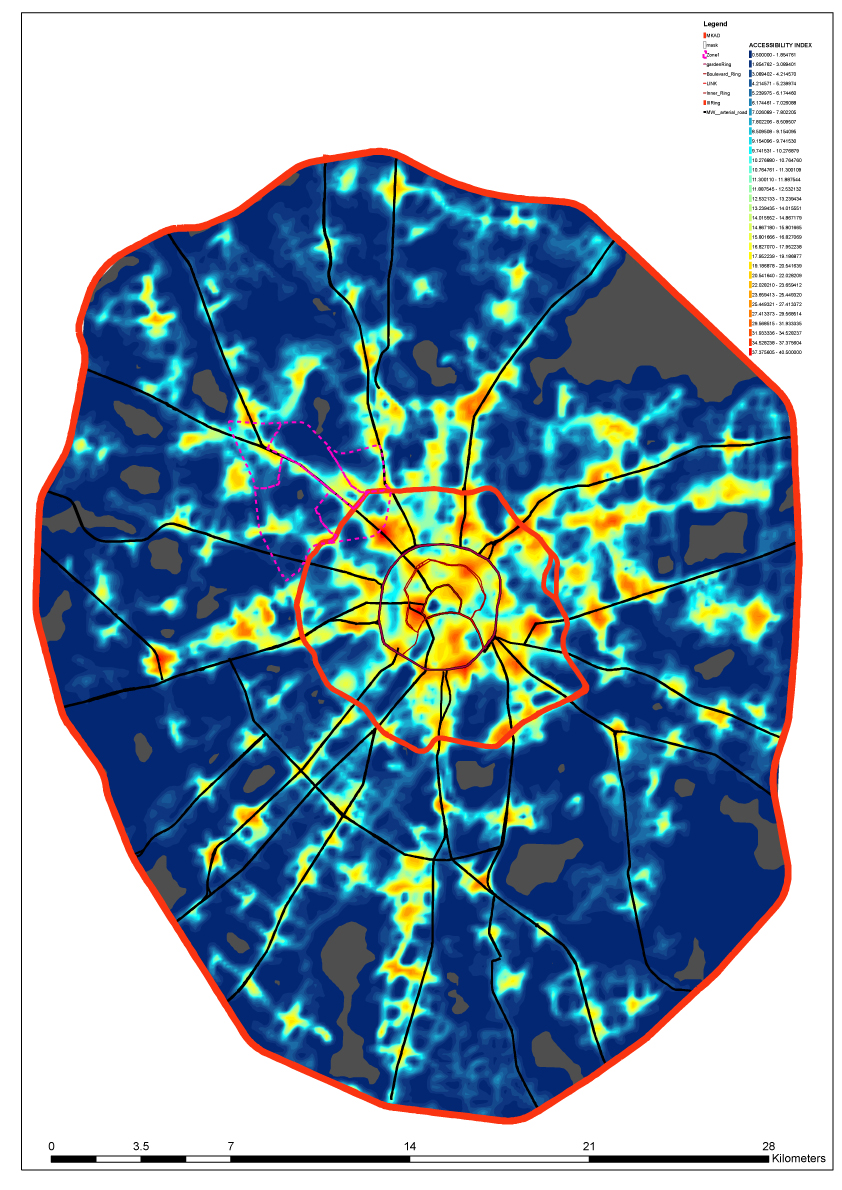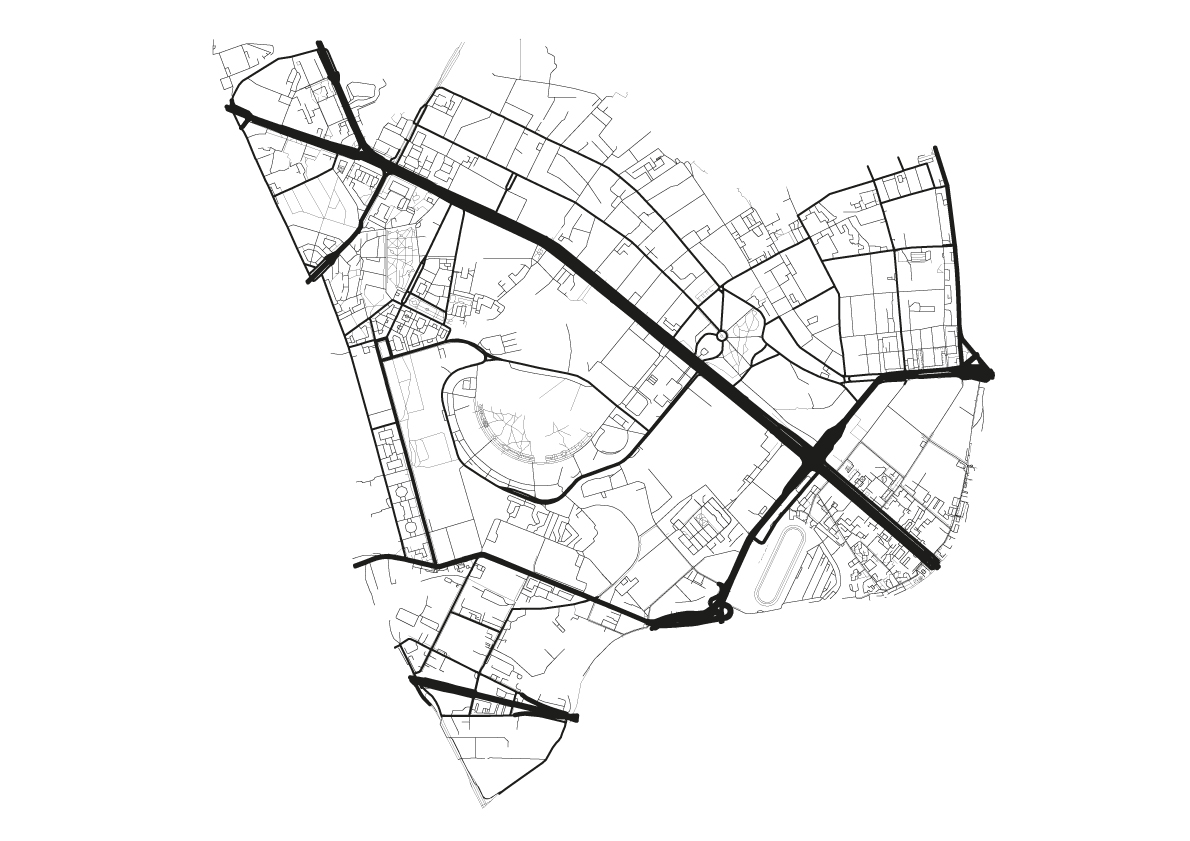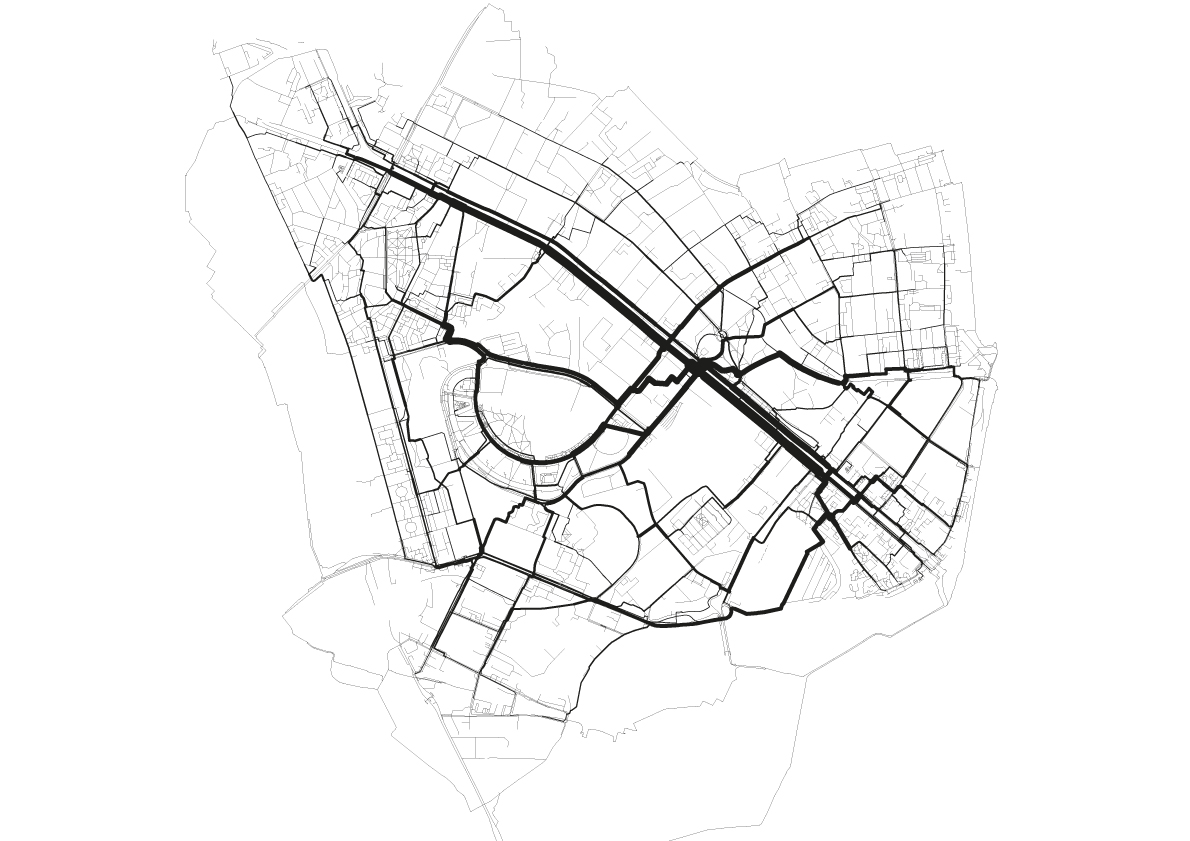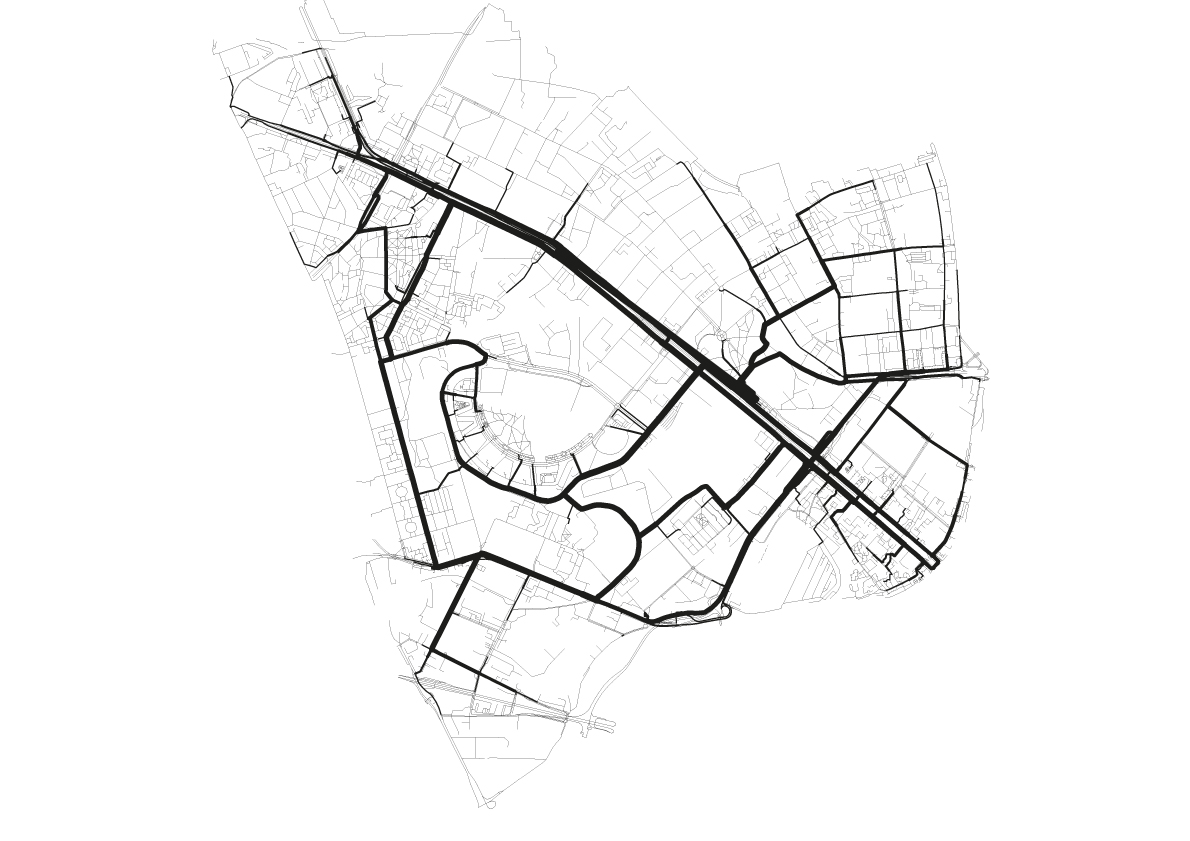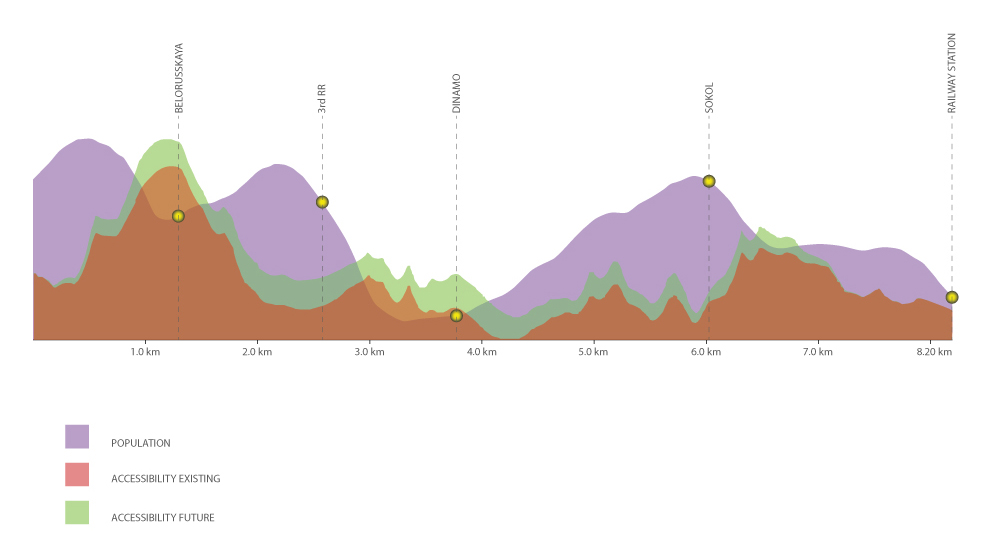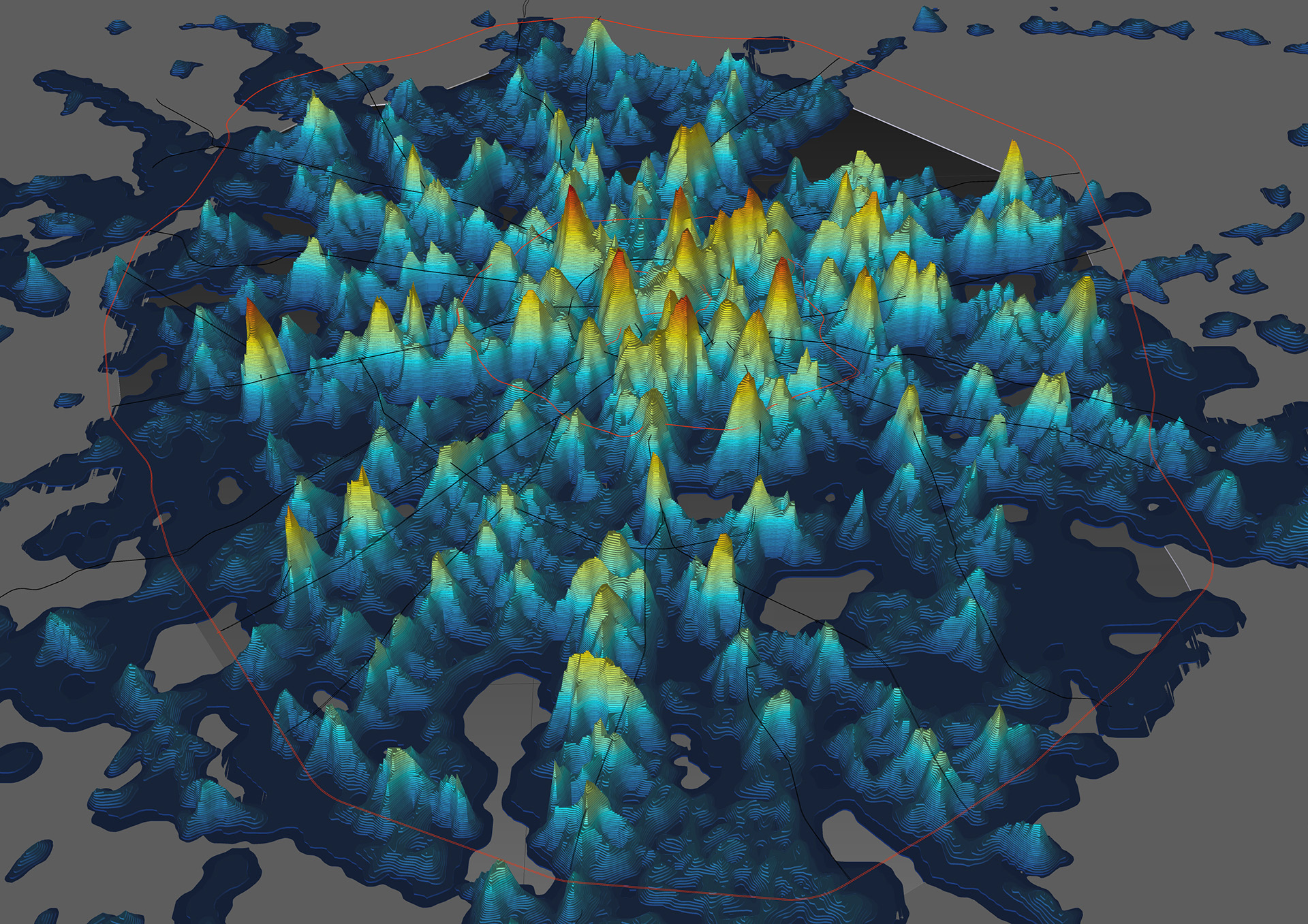Moscow Archaeology of the periphery
Moscow
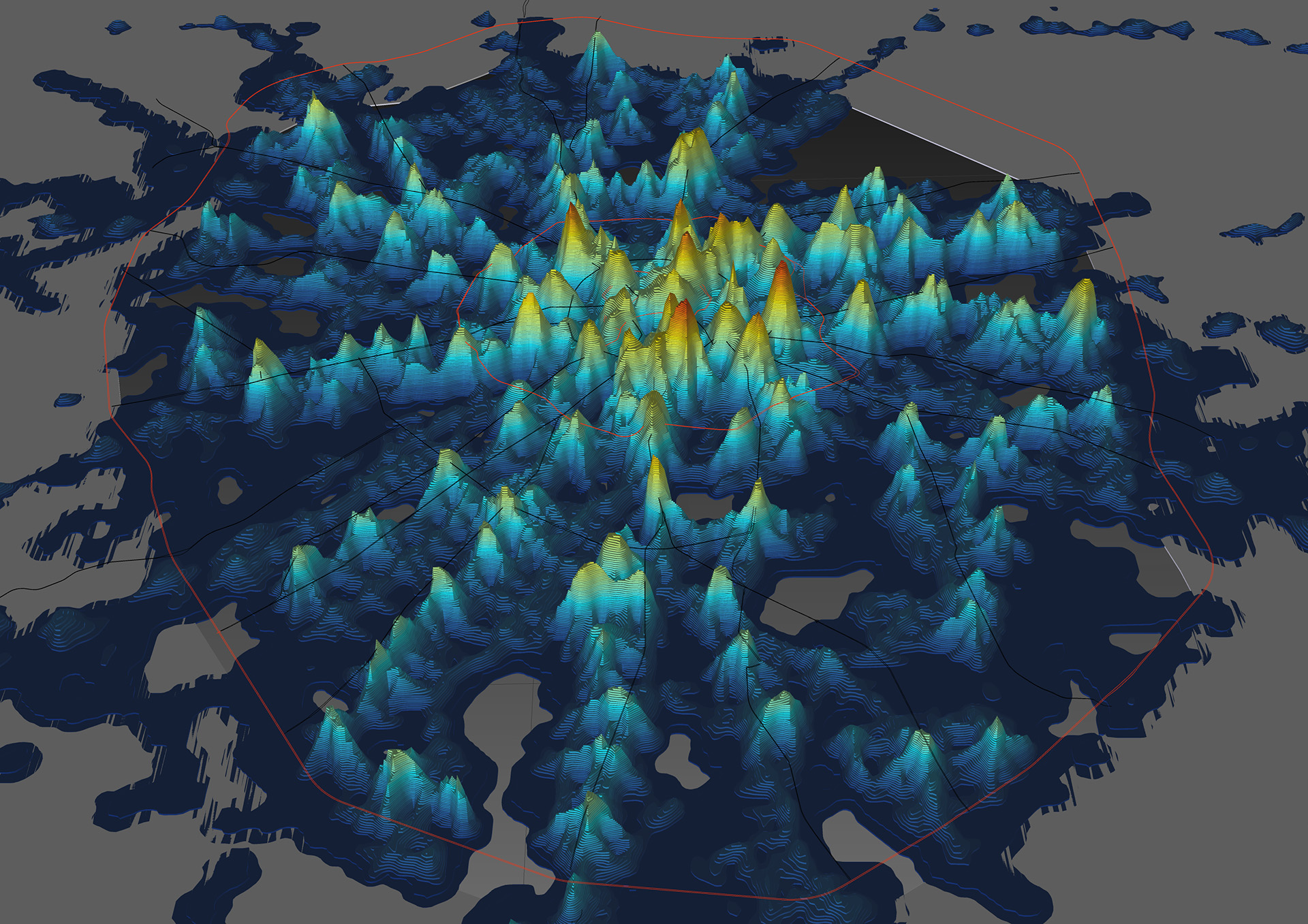
Gridlock, the Donut and the Intelligent Solutions. In recent years, the Moscow conurbation has experienced a rapid expansion and transformation. Due to the rate of growth of the urban landscape, the city is facing a loss of identity today; it is becoming more and more difficult to control the territorial expansion of the built environment. This ongoing process, affects the quality of life that the city itself can offer to its users. Among the several factors that determine the liveability of a great modern city, the availability of high-quality transport infrastructure certainly play a huge role; this must be conceived in terms of accessibility to the entire population and the rapid connection between places, maximizing opportunities for citizens and businesses that "live" - every day - the wider and wider territory.
Moscow is a clear example of a monocentric urban morphology, according to both its transport infrastructure network and public/private land use distribution. The radial axis system and orbital paths are reflected in the road fabric as well as in public transport. The current transport scheme was planned and developed over time, based on the assumption that demand for mobility all gathered towards the city center.
Following these principles, the urbanized territory of Moscow has been shaped in “super-functional blocks”, accessible by few roads (characterized by large section) which serve as connection to big areas, which remain otherwise inaccessible. Such a configuration clearly affects traffic flow; the limited availability of roads cannot allow for proper vehicular circulation. As a result, the few large connections and rigid patterns of circulation are often congested by immense traffic jams, causing longer trip times, slower speeds and increasing vehicular queuing.
Gridlock!
Location
Moscow
Client
Strelka KP Moscow
Main expertise
Public Transport Accessibility; Urban Research;
PROJECT HIGHLIGHTS
- Research for the Moscow Urban Forum 2013 - Topic Megacities: success beyond the centre
- Archaeology of the periphery is the first major interdisciplinary urban research in the post-Soviet practice
- Research Team: MIC-HUB, Project Meganom, Strelka
Project gallery
Our contribution
Today, it can be argued that the unbalanced allocation of population and work place is an increasing alarming phenomenon in Moscow. The average population density is 10,500 inhabitants per square kilometer.
Within the limits identified by the MKAD about 90% live in the strip of land located between the MKAD and the third road ring (figure 1). This vast area is strongly residential and industrially oriented, with poor social infrastructure and services. On the other hand, considering the spatial distribution of jobs, approximately 70% fall in the area located within the third ring. About half of this is concentrated within the Garden Ring. This type of spatial structure and distribution of functions is no longer sustainable and represents one of the main causes of the transport congestion which Moscow experiences daily.
This problem can and must be tackled from different perspectives, with an interdisciplinary approach. Through the strengthening of the current public transport system, it is possible to improve the capacity of existing infrastructures and create a working network system. Accordingly, Moscow has already planned a series of important projects regarding railway, underground and surface lines, all focused to maximize the network over the entire urban area. But equally important is a new distribution of land use, aimed at the creation of new multi-functional cluster located outside the third ring.
...
DOWNLOAD THE FILE TO READ MORE
